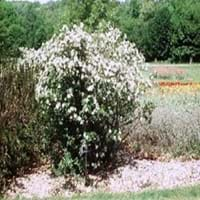Life Span
Perennial
Perennial
Origin
North America, United States, Northeastern United States, Mid-Atlantic United States, Southeastern United States, Canada
Southeastern Asia
Types
Red chokeberry, Purple chokeberry
Not Available
Habitat
Anthropogenic, Boggy areas, Cliffs, Fens, Swamps, Terrestrial, Wet lands, Woodlands
Subtropical climates, Tropical regions
USDA Hardiness Zone
3-8
10-14
Sunset Zone
A2, A3, 1a, 1b, 2a, 2b, 3a, 3b, 4, 5, 6, 7
H1, H2, 22, 23, 24
Habit
Thicket/Colonizing
Arching/Fountain-shaped
Flower Color
Not Available
Pink, Rose, Violet
Flower Color Modifier
Not Available
Bicolor
Fruit Color
Purplish-black
Yellow, Orange, Light Yellow, Lemon yellow, Yellow green, Gold
Leaf Color in Spring
Not Available
Green
Leaf Color in Summer
Not Available
Green
Leaf Color in Fall
Not Available
Green
Leaf Color in Winter
Not Available
Light Green
Leaf Shape
Elliptic
Oblovate
Plant Season
Spring, Summer, Fall
Spring, Summer, Fall
Sunlight
Full Sun, Partial Sun, Partial shade
Full Sun, Partial Sun
Type of Soil
Clay, Loam
Loam, Sand
The pH of Soil
Acidic, Neutral, Alkaline
Acidic, Neutral
Soil Drainage
Average
Average
Bloom Time
Late Spring, Early Summer
Early Spring, Spring, Late Spring, Early Summer, Summer, Late Summer
Tolerances
Not Available
Frost
Where to Plant?
Ground, Pot
Ground
How to Plant?
Cuttings, Divison, Seedlings
Seedlings, Stem Planting
Plant Maintenance
Medium
Low
Watering Requirements
Average Water Needs, Do Not over Water, Requires regular watering
Average Water Needs, Requires watering in the growing season
In Summer
Lots of watering
Lots of watering
In Spring
Moderate
Moderate
In Winter
Average Water
Average Water
Soil pH
Acidic, Neutral, Alkaline
Acidic, Neutral
Soil Type
Clay, Loam
Loam, Sand
Soil Drainage Capacity
Average
Average
Sun Exposure
Full Sun, Partial Sun, Partial shade
Full Sun, Partial Sun
Pruning
Prune after flowering, Remove branches that rub together, Remove damaged leaves, Remove dead branches, Remove dead leaves, Remove diseased branches by the tool's blades dipped into the alcohol solution
Prune in winter, Remove damaged leaves, Remove dead leaves
Fertilizers
10-10-10, All-Purpose Liquid Fertilizer, Apply N-P-K
Fertilize every year
Pests and Diseases
Red blotch
Red blotch
Plant Tolerance
Not Available
Drought
Flower Petal Number
Not Available
Single
Foliage Texture
Not Available
Medium
Foliage Sheen
Not Available
Glossy
Attracts
Not Available
Birds, Butterflies
Allergy
Anaphylaxis
Kidney Stone
Aesthetic Uses
Showy Purposes
Not Used For Aesthetic Purpose
Beauty Benefits
Good for skin
Not Available
Environmental Uses
Air purification, Food for birds, Wildlife
Air purification, Food for birds, Food for insects, Nesting sites for birds, Prevent Soil Erosion
Medicinal Uses
anti-cancer, Antioxidants, Cold
Anti-oxidant, Antioxidants, High blood pressure, Nutrients
Part of Plant Used
Fruits
Fruits, Seeds
Other Uses
Pectin
Oil is used in perfume, soaps, creams, etc., Used As Food, Used for its medicinal properties
Used As Indoor Plant
No
No
Used As Outdoor Plant
Yes
Yes
Garden Design
Foundation, Mixed Border
Edible, Fruit / Fruit Tree, Tropical
Botanical Name
ARONIA melanocarpa
AVERRHOA carambola
Common Name
Black Chokeberry
Carambola, Starfruit
In Hindi
Black Chokeberry Shrub
carambola पेड़
In German
Schwarz Aronia Strauch
Sternfrucht Baum
In French
Noir Chokeberry Arbuste
arbre carambole
In Spanish
Chokeberry negro Arbusto
árbol de carambola
In Greek
Μαύρο Chokeberry θάμνων
carambola δέντρο
In Portuguese
Chokeberry preto Arbusto
árvore de carambola
In Polish
Krzew aronii
karambola drzewo
In Latin
Lichen Frutex
carambola ligno
Phylum
Magnoliophyta
Tracheophyta
Class
Magnoliopsida
Magnoliopsida
Family
Rosaceae
Oxalidaceae
Clade
Angiosperms, Eudicots, Rosids
Angiosperms, Eudicots, Rosids
Tribe
Maleae
Not Available
Subfamily
Amygdaloideae
Not Available
Number of Species
Not Available
Season and Care of Black Chokeberry and Carambola
Season and care of Black Chokeberry and Carambola is important to know. While considering everything about Black Chokeberry and Carambola Care, growing season is an essential factor. Black Chokeberry season is Spring, Summer and Fall and Carambola season is Spring, Summer and Fall. The type of soil for Black Chokeberry is Clay, Loam and for Carambola is Loam, Sand while the PH of soil for Black Chokeberry is Acidic, Neutral, Alkaline and for Carambola is Acidic, Neutral.
Black Chokeberry and Carambola Physical Information
Black Chokeberry and Carambola physical information is very important for comparison. Black Chokeberry height is 182.88 cm and width 182.88 cm whereas Carambola height is 610.00 cm and width 610.00 cm. The color specification of Black Chokeberry and Carambola are as follows:
Black Chokeberry flower color: Not Available
Black Chokeberry leaf color: Not Available
Carambola flower color: Pink, Rose and Violet
- Carambola leaf color: Green
Care of Black Chokeberry and Carambola
Care of Black Chokeberry and Carambola include pruning, fertilizers, watering etc. Black Chokeberry pruning is done Prune after flowering, Remove branches that rub together, Remove damaged leaves, Remove dead branches, Remove dead leaves and Remove diseased branches by the tool's blades dipped into the alcohol solution and Carambola pruning is done Prune in winter, Remove damaged leaves and Remove dead leaves. In summer Black Chokeberry needs Lots of watering and in winter, it needs Average Water. Whereas, in summer Carambola needs Lots of watering and in winter, it needs Average Water.





